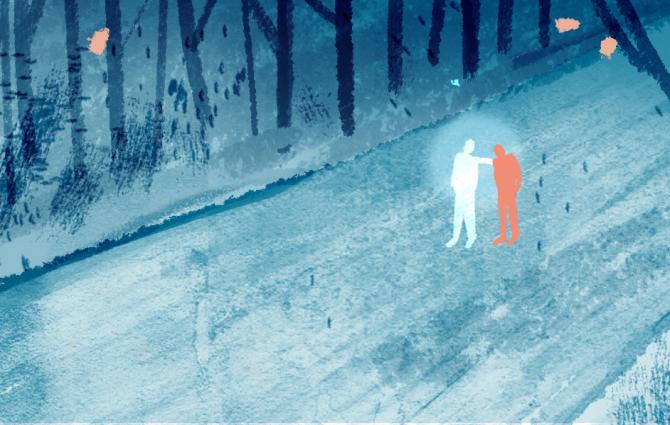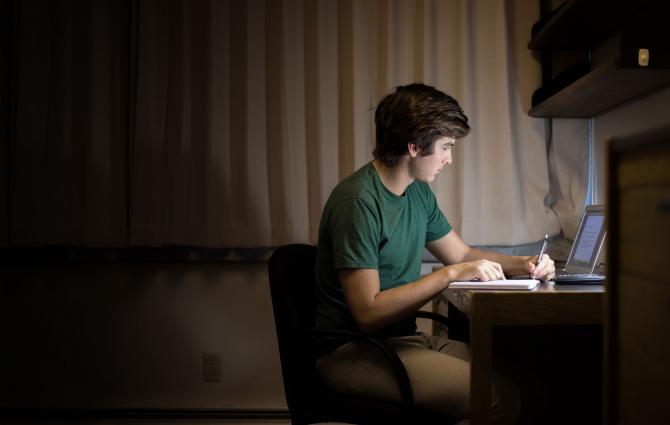As we grow up, it feels like we have less and less time to exercise our imaginations.
University is a great time to work on your critical thinking skills, but for a lot of us, it’s tough to find those moments to daydream that we had as kids.
I feel lucky because I’ve been able to be creative and use my imagination through my minor and club involvement. Consistently using my imagination helps me feel optimistic and gives me a greater ability to think on my feet.
It isn’t just about thinking up fantasy worlds full of hobgoblins and sea-witches, either—an active imagination can make it easier to navigate your life, from thinking up creative paper topics to planning exciting trips off the beaten path.
I’m going to look at two pieces of abstract art today, because, in particular, abstract art allows us to let go of our expectations of what something should look like. Letting go of your expectations and seeing where your mind takes you is the first step in fostering your imagination.
There’s never just one way to interpret these pieces—take a look and see how you view them.
Concerto by Gerhard Class

It takes a bit of imagination to see the “concerto” in this sculpture, which is crafted from welded and soldered sheet copper. But how would you even imagine a concerto in the first place?
A concerto is a musical composition that usually has three parts, often with a solo instrument backed by an orchestral ensemble. Class is taking something that exists in sheet music and in sound and creating a sculpture, something physically tangible. This forces the observer to consider how something we think we know can be seen (or heard) in a different way.
Walking past this piece, you could easily not know that it’s called Concerto, and might just think about how this particular formation of shapes makes you feel. For me, the piece is suggestive of something moving and changing. It inspires me to try and see something new every time I look at it, like finding shapes and figures in passing clouds.
This is a good way to think about life as well. You may see something completely different in Concerto than I do—and that’s okay. We all interpret the world a little differently.
Don’t limit yourself to what you expect or what others expect. If you think Concerto is a scathing criticism of the disposable nature of post-war popular music, cool! Allow yourself to look at something from a different perspective, free up your imagination, and find your own unique point-of-view.
Three Forms by Robert Clothier

This sculpture is made up of three concrete “C” shapes that evoke an abstract human body. It’s a bit easier to see a human shape in this than it is to see a concerto in the previous piece, but it still inspires you to pause and think.
Like Concerto, Three Forms could be interpreted in a lot of different ways. Personally, I see a deconstructed human body reduced to its most basic elements, without any decoration or pretenses.
I think this sculpture asks what we are deep down, who our most fundamental self is, once we remove all the performative aspects of our identities (the ways we’re taught or think we have to act). Without the pressures and responsibilities of adulthood, are we still that same imaginative kid we used to be?
I would say yes. There’s imagination inside all of us, no matter how old we are, and finding it can make the world a much more interesting place, where there are no limits to what’s possible.
With that in mind, can reconnecting with the kid version of yourself help you learn something new about the adult you? That’s up to you to discover. Try your hand at drawing, or writing, or dancing, or something else creative you liked as a kid, and see where it leads you.
As Concerto inspired me to consider how we can see the world in many different ways, the abstract human figure in Three Forms encourages us to realize that there are many different ways of seeing ourselves as well.



